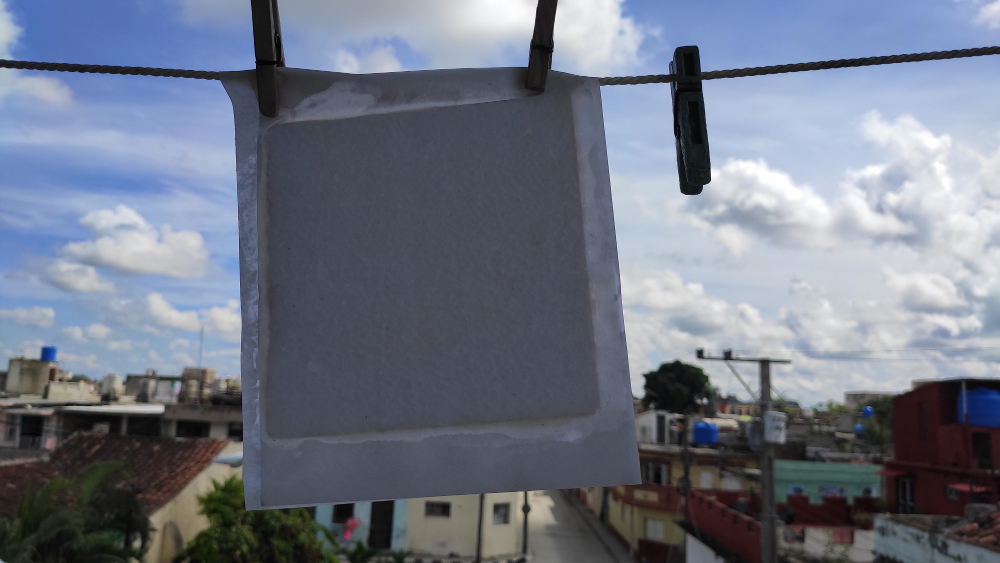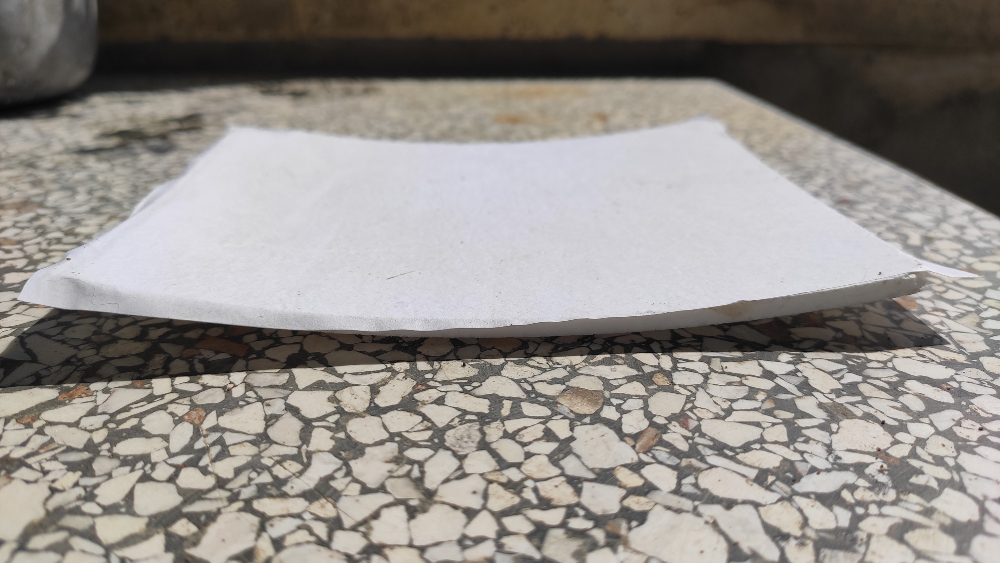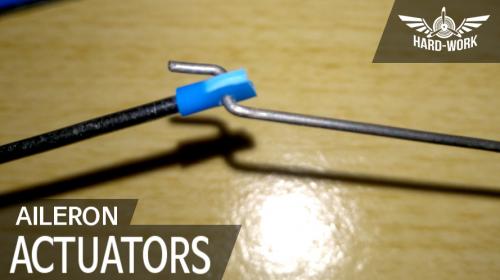Because FliteTest is all about foamboard
As we all know, foamboard is the soul of FliteTest. Therefore, without foamboard there are no FT planes. Maybe you might be thinking: Why make my own foamboard when I can buy it? And that's OK, but what if you just don't have access to an foamboard source? or it's just too expensive? This tutorial is aimed at those who like me do not have access to this important material and even so, we want to see our FT style plans fly. And to all those who are curious soul.

The Ingredients
Foamboard usually consists of three layers, an inner layer of polystyrene or polyurethane foam that is clad with an outer facing on each side of either a white clay coated paper, cotton archival paper or common brown Kraft paper. So, the core of our own foamboard must be some kind of foam and we'll need some paper to cover both sides. And of course, we'll need glue to put it all together.
The first thing to do is to get a foam sheet of the desired size. The advantage of this method is that we can define the thickness of our foamboard as we want. Foam is usually available in blocks much thicker than 5mm, so we will need to make thin sheets for our foamboard. For this I use my hot wire cutter, so I get sheets of the desired thickness. With a little practice and patience you get almost perfect results. As I have been able to appreciate, to obtain a 5mm thickness foamboard, it is necessary a core of foam of 4mm. The two layers of paper and glue add up to approximately 1mm. After passing the hot wire, it is advisable to sand with fine sandpaper to achieve a smoother surface. This step is optional but greatly improves the final result.

Once the foam core is ready, we mark it on the paper we will use to cover it, letting at least 1cm extra. In my case I used for tests, sheets of office paper, so I have a size limitation. But you can make pieces as big as the paper you can get. We will remember to make 2 layers of paper one for each side.

Let's get started
Making homemade foamboard is not difficult, from this point one could think of using aerosol glue to attach the paper to the foam core. Excellent, if you thought about it, you have discovered one of the ways to do it. But what if where you live you don't have access to aerosol glue as hard as it may seem? There are other solutions for this.
One solution is to use white glue mixed with water 50-50%. But we can also use much cheaper and more affordable materials to make homemade glue. The glue I used in my experiments is made with water and wheat flour. Yes, wheatpaste is cheap, simple and super strong. I could do a whole wheatpaste tutorial, but I have found this excellent instructable that perfectly describes the process. Just to make it clear that in my experiments i didn't use any additive and instead of cooking the mixture directly in a pan I preferred to do it in a bain-marie mixing constantly until obtaining a watery consistency.



For both diluted white glue and wheatpaste the following steps are common.
Step 1
Laying the foam sheet on a flat and protected surface, apply the glue all over the surface using a medium brush. Then remove the excess glue using an old credit card.

Step 2
We take one of the layers of paper, sprinkle it with water and put it on the foam sheet. With care to not tear the paper, we will remove all bubbles and wrinkles using the credit card once more time. If necessary, pin the bubbles to let the air out more easily.



Step 3
Once the paper is completely fixed, we will apply a new layer of glue using the brush and removing the excess with the credit card trying to leave a flat surface.

Step 4
We have finished with one side, then we will turn and repeat the process for the other side of the sheet.
Step 5
When we have finished, will hang it and let it dry in a ventilated place but avoiding the direct sun light. The direct sun would produce a differentiated drying of the layers and could produce some deformations.

Some observations
Sometimes it is necessary to remove the inner layers of the foamboard, so why not make your own foamboard with a single layer of paper? The answer is NO! While the glue dries, the fibers of the paper tend to shrink, which causes twists in the foam sheet. The result is a twisted and unusable foamboard.


With only one layer of paper on the bottom after drying under the sun.

Perfectly flat with one layer of paper on each side
The hardness and rigidity of the obtendas samples is excellent. Basic cuts and bends work perfectly too.


Even more complex folds
Unfortunately I don't have a scale at my disposal so I haven't been able to make weight comparisons between the samples obtained and other foamboards, but maybe some of you can.

The rough texture is due to the fact that in this test the foam was not sanded after cutting it with hot wire.
To obtain foamboard of different thicknesses you only need to get thinner sheets of foam. In this way you can obtain foamboard sheets up to 2mm thick.

Conclusions
This method is an easy option for those who, like me, can't get foamboard easily. I hope it can help something. There is still a lot to try but I think it may be a good option.
Thank you for reading.
I have opened a thread in the forum for future discussions. Here is the link.










I frequently communicate with HardWork via his sketchy internet connection. Not only has he managed to build some really beautiful models from practically nothing, he has taught himself to fly. Several modelers including myself have attempted to send him some supplies with mixed results. It takes over 30 days to ship anything to Cuba and all of the packages are inspected. Many items are not allowed. I hope others will join in and try shipping him items. I have successfully sent servos, motors, escs and a receiver. He only has one battery and this will eventually be a problem. Great work on your article HardWork!!
Wait till you see his newest airplane. A simulated twinn! It is gorgeous!
Log In to reply
I am very grateful to all the friends who have tried to help me, not only for the pieces I receive, but for the new and good friends I have managed to make.
I want to publicly thank Winglet, RockyBoy and Seahunter for their genuine help.
Expect new models soon using this foamboard. I hope this can help others like me.
Once again, thank you Winglet
Log In to reply
Log In to reply
Sometimes shortages make us think outside the box. This is an experiment that's still going on. I hope others will join.
Log In to reply
Usually we consider our foamboard builds "scratch-built", but you just took that concept to a new level! Great job and Thank you.
Log In to reply
Log In to reply
I would definitely try this.
BUT is it possible to hot glue the foam you used? I have similar foam here but hot glue eats the foam out.
Log In to reply
Log In to reply
This looks amazing!
Do you think it would work with depron instead of the polystyrene?
Also, is the wheat glue better than a 50/50 white glue mixture?
And does it work well with FliteTest plans?
Thank you in advance if you reply [I understand that commenting on a 3 year-old article and expecting an answer is not probably the wisest of things, but hey, I can try ;) ]
Log In to reply
Using depron instead will make your foambord stronger but u wont be able to bend it easyly without breaking it, for this cases the foam is better.
Yes, any comercial glue will work betther than wheat glue, and yes, i recomend it to mix with water,
And finally yes, if u go to the forums using the link i leave at the end of the article u will find more experiments but also kind of building steps from the FT simple Scout using this material.
Log In to reply